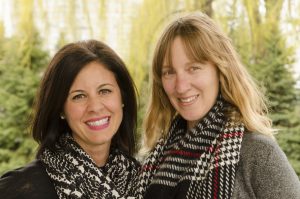Many of my first appointments in the cancer world were just a blur. I would sit, terrified, in these sterile clinic rooms wanting something to focus on besides the fact that a doctor would come through the door at any moment and throw some scary words out there. Words like aggressive and invasive, radiation and reconstruction.
The breast cancer clinic had given me a giant binder of information – information that was divided into areas of medical practice, not the areas of experience that I was about to live through.
I asked an oncology nurse for a brochure that shows the overall roadmap, like an organizational chart for cancer treatment. I needed something I could quickly reference to see where I’m going and be prepared. The nurse smiled and chuckled and said that this would be a good project to work on while I’m off work for treatment.
I relayed this cliché to my new feisty BFF (breasts friends forever), Melanie. We talked a lot about how hard it is for patients to understand the roles different doctors play and what their respective expertise is. Melanie perfectly corroborated my need for a roadmap!
We critiqued the current state of breast cancer treatment as very problematic – breast cancer patients are making quick decisions, life-changing decisions, without the benefit of clarity of the options and knowledge of the procedures.
At some point during this conversation, Melanie asked me why I had not had a skin-sparing mastectomy. The floor fell out from under me. It was a hard moment for both of us. I had had a mastectomy, but not a skin-sparing mastectomy. I had never even heard of a skin-sparing mastectomy until that very moment. My own situation was a perfect example of what we had been talking about.
In that moment, I was faced with the reality that my surgeon made a surgical decision about my case that was based on factors like hospital scheduling. It was not driven by an understanding of all of the options and consultation with the patient. What was missing in my situation is called informed consent. It’s also called respect for personal choices and agency. Bottom line, had my surgeon used the words ‘skin-sparing’ I may have made a different choice. By withholding this information, I feel that my agency was compromised.
Good thing I had my feisty cancer friend Melanie, and a strong sense of fellowship with the women who are making these decisions about their care every day.
We vowed to do something about this situation. We were set on making some lemonade out of lemons.
Melanie and I decided to create a roadmap – which we ultimately called the “Decision Trees” – for future patients. We co-founded a labour of love – an organization we called Be the Choice – that blossomed into this amazing organization of dedicated volunteers.
I had the privilege of co-authoring the Decision Tree content with an international team of exceptional medical professionals whose generosity of time and knowledge were an inspiration. During this time Melanie tirelessly advocated our cause publicly, institutionally, and developed the community and resources to support the work.
These beautiful Decision Trees took over four years to grow and taught me so much about the healing powers of patient-centered, community-based knowledge.
What we have created is that roadmap I couldn’t find when I first began my journey in the cancer world. Instead of a brochure, however, it’s a lovely, easy-to-navigate web-based tool you can use on your phone, iPad, tablet or computer. We hope medical doctors everywhere will share the Trees with their own patients and support patient decision making. Informed conversations are essential to patient empowerment and thriving while in treatment. It’s vital that patient values and voice lead treatment choices.
By using the Decision Trees you will see how procedures are related to one another and which doctor is associated with each treatment. For example, did you know that the same medical oncologist that prescribes chemo might also be prescribing hormone therapy a few months or years later, and this person is different from a radiation oncologist? Or, that there may be two or three different surgeons involved in any individual case? Just keeping doctors straight can get confusing!
My hope is that this decision tool that was lovingly squeezed out of something sour by two survivors and an incredible team of volunteer doctors, researchers, patients, practitioners, teachers, social scientists, artists and the breast cancer community, will help breast cancer patients, their friends and family understand the bigger picture of a breast cancer diagnosis.
Posted by
